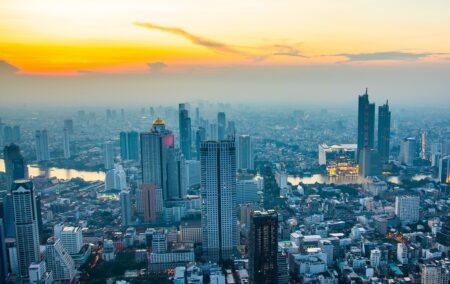Seasonal crop burning and forest fires, particularly in the north of the country, are blamed for the fact that more than 10 million people in Thailand sought treatment for illnesses linked to air pollution in 2023, according to the BBC.
Thailand’s air pollution is particularly acute during the dry season, typically running from November to March, mainly due to seasonal burning of sugarcane and rice fields.
Some of Thailand’s northern cities have been cited as among the world’s most polluted by air quality monitoring websites. Chiang Mai, Chiang Rai and Lampang have been given ‘unhealthy’ ratings by monitoring platform IQAir.
In February, officials in Bangkok urged employees to work from home for two days as pollution levels in the capital city and surrounding provinces reached unhealthy levels.
Over the years, residents and environmental groups in Thailand have also filed lawsuits to demand government action against pollution.
The AFP news agency reports that from 1.3 million in the first nine weeks of 2023, the number of people seeking treatment for pollution-related illnesses increased to 1.6 million at the start of 2024,
Illnesses include chronic conditions such as lung cancer, bronchitis, asthma, and heart diseases.
The BBC reports that the National Economic and Social Development Council has urged that Thailand must ‘prioritise… the impact of PM2.5 on public health’. PM 2.5 refers to the level of tiny, hazardous particles – with diameters that are 2.5 micrometres or smaller – that can enter the bloodstream though the lungs.
Exposure to these micro-pollutants can cause burning and itching in the eyes and skin, as well as coughing and chest tightness.
These symptoms may be amplified for those who have pre-existing heart or lung conditions.
Earlier this year, Prime Minister Srettha Thavisin pledged to improve air quality. Lawmakers also endorsed a bill aimed at tackling the problem.
[Image: Wilfried Strang from Pixabay]

